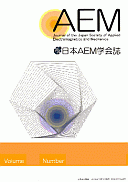Volume 26, Issue 4
Displaying 1-7 of 7 articles from this issue
- |<
- <
- 1
- >
- >|
Special Topic : Application of Specific Environment
-
2018Volume 26Issue 4 Pages 487-
Published: 2018
Released on J-STAGE: March 06, 2019
Download PDF (868K) -
2018Volume 26Issue 4 Pages 488-496
Published: 2018
Released on J-STAGE: March 06, 2019
Download PDF (2606K) -
2018Volume 26Issue 4 Pages 497-504
Published: 2018
Released on J-STAGE: March 06, 2019
Download PDF (3781K) -
2018Volume 26Issue 4 Pages 505-510
Published: 2018
Released on J-STAGE: March 06, 2019
Download PDF (3011K) -
2018Volume 26Issue 4 Pages 511-515
Published: 2018
Released on J-STAGE: March 06, 2019
Download PDF (1490K) -
2018Volume 26Issue 4 Pages 516-521
Published: 2018
Released on J-STAGE: March 06, 2019
Download PDF (5500K) -
2018Volume 26Issue 4 Pages 522-525
Published: 2018
Released on J-STAGE: March 06, 2019
Download PDF (3495K)
- |<
- <
- 1
- >
- >|
